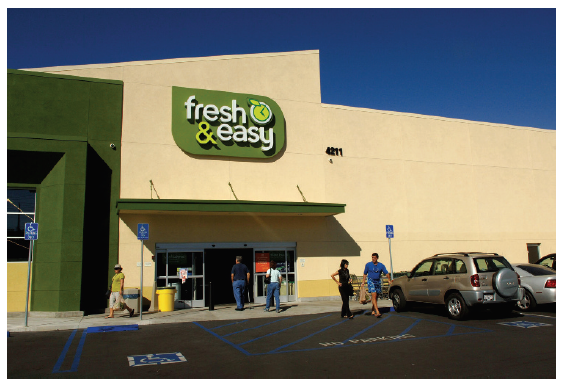1. What are the keys to Tescos success in the competitive global retailing industry? 2. Which of...
Question:
2. Which of the market-entry strategies identified in the chapter was Tesco using in the United States? Do you think this was the appropriate strategy?
3. Assess the challenges facing CEO Dave Lewis. What steps must he take to address the price issue and reconnect with customers?
Tesco is the largest supermarket chain in the United Kingdom. The company€™s slogan is €œEvery Little Helps€; it executes on that claim in various ways, including its Clubcard loyalty program and an online grocery retailing operation that fulfills more than 100,000 orders every week. Tesco€™s supply chain€”including relationships with suppliers and distributors€”is one of the best in the industry. The retailer performed solidly during the recession, and the company has pursued growth opportunities in non-grocery areas such as banking and broadband services. Tesco generates 70 percent of its profits in the United Kingdom, where it is the largest private-sector employer.
Despite these strengths, Tesco lags behind retailing giants Walmart and Carrefour in terms of global presence. To address this weakness, Sir Terry Leahy, Tesco CEO from 1996 to 2010, formulated and implemented an expansion strategy. For example, his executives initiated negotiations with India€™s Bharti Enterprises about possible joint ventures. Tesco is also expanding into China and Japan. Tesco currently has operations in 12 countries.
Sir Terry Leahy€™s Vision: Ubiquity in the United States
The United States represented a key expansion destination. Leahy committed hundreds of millions of dollars to open small stores in Nevada, Arizona, and California, a decision that industry observers described as €œone of the most widely watched events in the global retailing sector.€ The former CEO€™s vision was to have 10,000 small convenience stores €œon every junction, in every major city in the USA.€
The first stores had 15,000 square feet of floor space and bore the name €œTesco Fresh & Easy€; they offered a focused selection of fresh foods, packaged goods, and prepared meals (see Exhibit 12-13). Commenting on the $1 trillion U.S. grocery market, Leahy noted, €œDemand for convenience shopping is very well developed there. There are lots of wealthy and busy people and it€™s multicultural. You€™ve got to start somewhere and it€™s important to do it in bite-sized chunks.€
In its home market, Tesco operates more than 3,300 stores in four formats: supercenters (large stores with a limited range of nonfood items), regular and compact supermarkets, and Tesco Express convenience stores. While the U.S. market entry was limited to small neighborhood markets, Tesco raised eyebrows with an ambitious plan to establish its own distribution network. Management expected prepared foods such as salads and chicken-based dishes to be big sellers.
To execute its plan, Tesco brought two suppliers across the Atlantic: Natures Way Foods, which specializes in salads, and 2 Sisters Food Group, a leading UK poultry purveyor. Management was confident it had identified an opportunity. The small-store format made it unlikely that Tesco would encounter the type of backlash that has been directed at Walmart in some communities. Speaking about the U.S. retail environment, Tim Mason, director of marketing and property at Tesco, noted, €œWe found that the [U.S.] market for convenience stores down your street is not very well served. There is more consumer opportunity and more retail opportunity.€
At the end of 2010, however, 6 years after the launch, it was clear that the Fresh & Easy venture was performing below expectations. Cumulative losses totaled more than $600 million. Only 145 stores were operating; the Tesco team had anticipated having 200 stores open by the end of 2009. Some industry observers questioned whether Tesco had fully understood American consumers. In a typical U.S. grocery store, for example, many fresh fruits and vegetables are stacked loose in coolers in the produce section. At Fresh & Easy, by contrast, most produce is displayed in bags. The emphasis on privatelabel brands was cited as another drawback. As one retail executive explained, €œFresh & Easy is very highly dependent on private label and the U.S. consumer likes brands. Fresh & Easy was not a known brand, so by focusing on that, there was nothing for the consumer to hang on to.€
Exhibit 12-13

The word "distribution" has several meanings in the financial world, most of them pertaining to the payment of assets from a fund, account, or individual security to an investor or beneficiary. Retirement account distributions are among the most...
Step by Step Answer:






